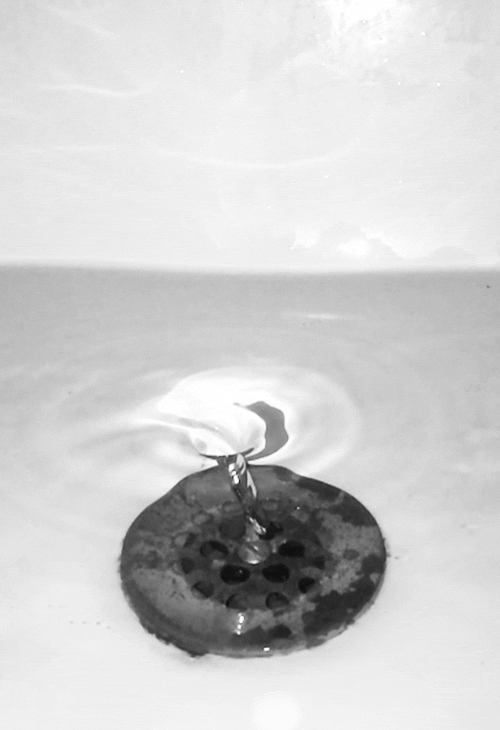Most people don't pay attention to their drains until something goes wrong. And most times, they'll only start to notice when the drain starts to smell or worse, becomes clogged.
Sink, shower, and kitchen drains all need to be cleaned regularly so they don't build up and smell. Scented candles may cover the smell temporarily but you will need to address the source to fully get rid of the odor. Learning how to clean your own drain can save you money and avoid having to pay someone else to do the job.
First — Why Does My Bathroom Sink Smell?
There could be a few reasons why it smells. The good news is that it can be easily fixed!
To clean a bathroom sink, it is important to have a proper P-trap. A P-trap is the curved portion of the pipe under the sink. It's supposed to create a seal by holding water, which prevents sewer gasses from getting into the bathroom. Your sink should have a vent that gives back flowing gasses somewhere to go. If the sewer smells in your sink, it is caused by a blocked air vent, and you may need to seek professional assistance.
If the smell is coming from the water flowing from your sink, not the drain, then it is most likely coming from something in the faucet that's causing the odor. Take off the aerator cap and look inside for any build-up or gunk you can clean off. How bad the smell gets usually depends on how often you clean your drains. There could also be stagnant water in your overflow drain, which can cause an unpleasant smell. Clean your bathroom sink as often as you can and use drain cleaners to avoid any smelly drain odors.
If your shower drain or bathtub drain starts to smell, you will need to find out what's causing it. There could be odor-causing bacteria feeding on debris in your pipes. This process will give off a foul-smelling hydrogen sulfide gas, which smells like sewage or rotten eggs.
Mold also grows where it's warm and wet
Mold growth on the debris causing drain clog can also cause a bad smell. It's important to clean your drains to avoid smell odors and other drain issues. If your kitchen sink drain smells, you might have to dry your P-trap. There may be a drainpipe or vent problem down there or worse, it could involve a damaged pipe or an obstruction in your vent.
Cool! Now Let’s Explore Non-Toxic Ways to Clean Those Smelly Sinks and Drains
To clean your drains, you can always use a quality drain cleaner like Liquid Plumr. The thick gel formula helps dissolve drain clogs, prevent new ones, and get rid of any drain smells and odors. But we’ve found (and personally love) all of the tried-and-true nontoxic methods below.
The good news is that you usually don’t need a plumber to get rid of the smell coming from your drain. Most of the time, you don’t even need special equipment. These methods rely on nontoxic household ingredients you probably already have on hand. Many people find that a combination of methods works best. So, start with the most convenient one for you, then try another approach if your drain continues to stink.
The Hot Water Method
Just as hot water and dish soap get greasy dishes clean, they can clean your smelly drain, too. For this method, bring a pot of water to a boil, and turn off the heat. Stir in a few squirts of liquid dish detergent. First, carefully pour half of the mixture down your drain and wait five minutes for it to dissolve oily buildup. Next, turn your cold water tap on full blast and let it run for a full minute to solidify any remaining grease. Finally, pour the remaining hot water down the drain to remove congealed residue.
Vinegar Cleans Stinky Drains
Vinegar is a fantastic deodorizer. It also cuts through grease to help clean smelly drains by dissolving biofilm or other material. Using hot vinegar can also power through small clogs, which are often the source of the drain’s smell. To clean your smelly drain with vinegar, bring four cups of it to a boil, then pour half down the drain. Run cold water for a minute and pour the rest of the hot vinegar down the drain to rinse.
Scour the Drain with Baking Soda
Remember the baking soda and vinegar “volcano” you made in grade school? That same foaming action can clean stinky drains and eliminate the smell. For this method, you need to run hot water down the drain for a minute to help soften any buildup in the drainpipe. Then, dump 1 cup of baking soda (bicarbonate) down the drain and chase it with 2 cups of vinegar. Wait for the fizzing to stop, and rinse the drain first with hot then with cold water for one minute each.
Ways to Clean Smelly Garbage Disposal Drains
Sometimes, buildup in your garbage disposal can make your kitchen sink’s drain smell. That stink may get worse when your dishwasher runs because it feeds into the same drain. To get rid of the odor, try one of these methods.
Run Ice Cubes Through It
Ice cubes are a great way to scour your disposal and get rid of grimy buildup. For best results, follow the hot water method to clean your smelly drain first, and then push two cups of ice cubes past the rubber flange into your disposer. With the cold water tap going full blast, turn on your disposal and let it run for two minutes. Once time’s up, run hot water for a minute and turn off the disposal.
Grind Citrus Peels
Putting lemon or orange slices into your disposer before running it can both deodorize and clean your disposer’s blades. The fruit’s acidic juice does a great job of removing grease, too. Start by running hot water to loosen any grease in your drain. Next, turn off the tap and push some sliced citrus wedges past the rubber flanges into your disposal. Finally, run the tap full blast with cold water and start your garbage disposal. Let it whir for a couple of minutes, switch the tap to hot water and turn the disposal off.
Lastly, Keep That Disposal Smelling Fresh
Want a fresh-smelling disposal all the time? Add lemon slices to an ice cube tray, fill it with water, and freeze. Keep a bag of the cubes in your freezer so you can run a couple down the disposal after washing dinner dishes. Voila!










